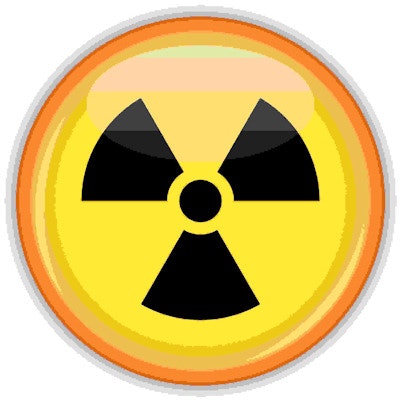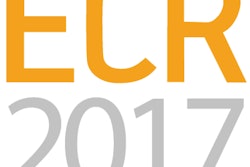
The combination of dose monitoring software and continuing education for radiographers/technologists can produce quantifiable reductions in radiation dose delivered to pediatric patients from conventional radiography studies, according to research presented at ECR 2017 in Vienna.
After implementing a centralized dose monitoring system for six hospitals in Madrid and providing additional education for radiographers on important dose optimization topics, a Spanish group achieved average radiation dose reductions ranging from 8% to 20% depending on the type of examination.
"Dose control systems help us reduce variability in doses of radiation," said Dr. Eduardo Fraile, PhD, of the Unidad Central Radiodiagnóstico in Madrid. "Continuous education and training will help decrease the number of overdose in pediatric patients."
Unnecessarily high doses
The number of x-ray examinations performed each year continues to increase, and many times patients are receiving unnecessarily high doses of radiation, he said, noting that 66% of all radiological procedures are conventional radiography exams and 15% of these are given to patients under 21 years old. In addition, 48% of radiography studies are performed in emergency rooms, and 20% of these studies are for young people.
 Dr. Eduardo Fraile Moreno, PhD.
Dr. Eduardo Fraile Moreno, PhD.
New legislation has also elevated the importance of this topic. In late 2013, the European Union (EU) revised its Basic Safety Standards (BSS) via Directive 2013/59/Euratom. The regulation details standards for protecting patients against the dangers from exposure to ionizing radiation, and EU member states must comply with the standards by 6 February 2018.
The Spanish researchers set out to utilize an electronic centralized dose monitoring system to analyze the causes of overdose alerts for conventional x-ray studies. They also wanted to see if a continuing education program could reduce the number of alerts.
The Unidad Central Radiodiagnóstico manages the radiology departments for six general hospitals in Madrid, and performs approximately 845,000 imaging examinations per year. All six emergency rooms are connected to a central PACS, and DoseWatch software (GE Healthcare) is used to obtain and monitor radiation doses.
The dose monitoring software provides alerts if a patient has received a higher dose than normal for that exam type, Fraile said. The average dose is updated daily on the software, and alert thresholds are segmented by study descriptions and facilities.
The group classified the causes of the alerts into the following 12 categories:
- Collimation
- Radiographer technique
- Repetition
- New projections
- Detector distance
- Application of grid
- Modality failure
- Patient movement
- Jewelry or patient's clothing
- Noisy imaging
- Imaging artifacts
- Plaster (from a cast)
Education program
After gathering alert data for May 2016, the group then implemented a radiographers' educational program, which included conferences on topics such as grid/focal distance, collimation, manual/automatic acquisition, and the exposition index. The team then again analyzed the alerts for the month of October.
| Conventional x-ray studies and number of dose alerts | ||
| No. of studies in patients under 21 |
No. of dose alerts | |
| May 2016 | 4,074 | 280 (6.9%) |
| October 2016 | 3,759 | 233 (6.2%) |
The age group of 11-15 had the highest percentage of dose alerts:
- Ages 11-15: 38% of dose alerts
- Ages 16-20: 33% of dose alerts
- Ages 0-5: 15% of dose alerts
- Ages 6-10: 14% of dose alerts
Issues with collimation were the most common cause of the dose alerts:
- Collimation: 32% of dose alerts
- Repetition: 20% of dose alerts
- Radiographer technique: 18% of dose alerts
- Plaster: 15% of dose alerts
- New projections: 11% of dose alerts
- Applications of grid: 4% of dose alerts
Dose reductions
The standard thorax exam with posterioranterior and lateral views was the most performed procedure in the study and experienced an 8% decline in average dose in the study. The highest level of dose reduction was found in lumbar spine exams with posterioranterior and lateral views, however. Those exams had a 20% decline in average dose between May and October 2016. What's more, the percentage of alerts for those studies dropped from 16% in May to 9% in October.
The researchers also found significant reduction in dose for most age groups.
| Change in average radiation dose for the most commonly used protocols by age group | |
| Age group | Average change from May to October 2016 |
| 0-5 years | -12% |
| 6-10 years | -28% |
| 11-15 years | +6% |
| 16-20 years | -13% |
The dose management software helps to reduce variability in radiation doses to patient, according to Fraile.
"Dose control systems will help us comply with the new legislation," he said.



















